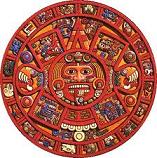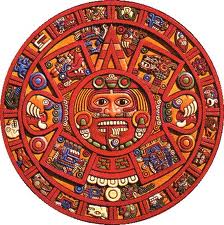
Get
this PDF Download Only .99 cents from Paypal-Paloadz !!
114 kb 0.99
 The Mayan
Calendar 5200-year Great Cycle is a variation of the Long Count
Initial Series. Formerly developed in conjunction with the Dresden
Codex, the Long Count begins with the presumed Mayan Creation date,
noted as 13.0.0.0.0. The most significant digits on the left are
Baktuns (400-years), next are Katuns (20-years), and Tuns
(360-days), and Uinals (20-days) and Kins (days). The Long Count
measures 13 consecutive 400-year-Baktun-cycles or 5200-Tun-years.
Therefore, conjecture rationalizes at least 12 Baktuns and possibly
13 Baktuns have elapsed prior to the onset of the Long Count. The
5200-year Great Cycle, on the other hand, introduces a cyclic
calendar system whereby 5200-Tun-years repeat to mirror the 52-year
Calendar Round. The secondary age category cumulatively adds to
achieve 5200-Tun-years, or as some historians agree,
5200-Haab-solar-years in a Mayan 5200-year Great Cycle. The Great
Cycle is generally associated with 5200-Tun-years having 360-days
each. Depending on the context used, some opinions favor the
365-day-Haab-solar-year. The special treatment of the Wayeb 5-feast
days between the 360-day-Tun-year and the 365-day-Haab-solar-year is
usually included for Long Count projections.
The Mayan
Calendar 5200-year Great Cycle is a variation of the Long Count
Initial Series. Formerly developed in conjunction with the Dresden
Codex, the Long Count begins with the presumed Mayan Creation date,
noted as 13.0.0.0.0. The most significant digits on the left are
Baktuns (400-years), next are Katuns (20-years), and Tuns
(360-days), and Uinals (20-days) and Kins (days). The Long Count
measures 13 consecutive 400-year-Baktun-cycles or 5200-Tun-years.
Therefore, conjecture rationalizes at least 12 Baktuns and possibly
13 Baktuns have elapsed prior to the onset of the Long Count. The
5200-year Great Cycle, on the other hand, introduces a cyclic
calendar system whereby 5200-Tun-years repeat to mirror the 52-year
Calendar Round. The secondary age category cumulatively adds to
achieve 5200-Tun-years, or as some historians agree,
5200-Haab-solar-years in a Mayan 5200-year Great Cycle. The Great
Cycle is generally associated with 5200-Tun-years having 360-days
each. Depending on the context used, some opinions favor the
365-day-Haab-solar-year. The special treatment of the Wayeb 5-feast
days between the 360-day-Tun-year and the 365-day-Haab-solar-year is
usually included for Long Count projections. |
Mayan_5200-year_Great_Cycle in
scripture contrasts a Long Count Creation Date from the
Dresden Codex with repeating 800-year Generation Cycles
involving the Antediluvian Calendar. Original Torah meanings
preserve the Antediluvian Calendar primary and secondary
ages with the same diligence and attention to detail. Sacred
texts such as the Book of Enoch, Dead Sea Scrolls and
Jubilees support scriptural evidence concerning ancient Holy
Bible calendars. PDF needs image updates. Cart Item M5200GC Get
this PDF Download Only .99 cents from Paypal-Paloadz !!
|
114 kb 0.99 |